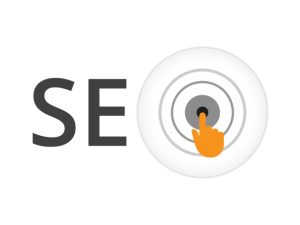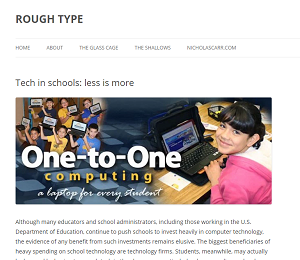The only constant is change. That’s more true of technology than anything else. Unsurprisingly, digital marketing best-practices evolve with technology.
One of the most obvious ways that online marketers have been forced to adapt to changes in high-tech over the past several years is with the emergence of mobile devices. Thanks to the widespread acceptance of smartphones, tablets, and phablets as the “go to” source for casual web browsing and digital communications, marketers were left with little choice: embrace mobile marketing or go bankrupt.

In this article, we’ll cover the dominance of the mobile market and explain how pay-per-click (PPC) has changed because of mobile technology. Finally, we’ll offer a few best-practices for modern mobile advertising.
The Emergence of Mobile
“Mobile first.”
Some online marketers and web designers have adopted that as their mantra. The whole idea behind the “mobile first” concept is that you start by designing your campaign or website for a mobile audience and then look for ways to reach a desktop or laptop audience afterwards.
It was once the case that people designed websites for desktops first, and then adapted them to mobile platforms later. The “mobile first” crowd does the exact opposite.
Many online marketers adopt a “mobile first” strategy for good reason. Google has confirmed that there are more searches now on mobile devices than desktop devices. Also, the number of mobile users has surpassed the number of desktop users.
You probably won’t need to look far to find anecdotal evidence that mobile traffic dominates cyberspace. Have a look at your own analytics and it’s likely you’ll see that much (if not most) of your traffic comes from a mobile platform. That’s especially true if you’re running a “news” type of site like BuzzFeed or Mashable.
In short: mobile dominates.
Mobile vs. Desktop Advertising
Great marketers always look for new opportunities to reach people in their target market. As mobile became more dominant over the past few years, business owners and professional advertisers alike saw an opportunity to promote their brand among a tech-savvy audience.
But mobile devices are no longer for young hipsters who adapt to high-tech instinctively. Baby boomers, grandparents, and the middle-aged are all finding mobile technology indispensable. As a result, the opportunities for digital marketers to reach people using a mobile device have never been better.
Those opportunities are reflected in the numbers. According to WordStream founder Larry Kim, mobile ad share is growing while desktop ad share is shrinking. At the same time costs-per-click (CPCs) are at an all-time high.
Why the disconnect? Mobile marketing opportunities are commanding a premium price tag because that’s where the people are.
It’s also where the smart marketers are.
Ad Blockers
Every digital marketer’s favorite boogeyman is the dreaded ad blocker. That’s technology that lives up to its name. It blocks certain types of ads from appearing.
Unfortunately, mobile browsers can use ad blockers as well. The Apple iPhone, for example, released content blocking software as part of its iOS 9 operating system. Although the content blocker doesn’t block ads itself, it enables developers to produce web apps that do block ads.
In addition to ads, ad blockers are known to block technology that’s often used by online marketers, such as cookies, auto-play videos, pop-ups and images. That makes it more difficult to retarget consumers and reach them with creative work.
There’s clearly a market for ad blockers, although one has to wonder how they advertise online. According to the 2015 Ad Blocking Report, more than 200 million people around the world are using ad blockers. That’s up 41% from 2014. According to one estimate, those ad blockers are costing advertisers $ 22 billion a year in revenue.
It’s enough to keep a digital marketer up at night.
There’s some good news, though. According to NiemanLab, publications have reported that only 1-2% of their visitors are using content blocking software.
The flip side to that coin is that ads on mobile devices are more of an interruption than they are on desktop platforms, thanks to the limited real estate on a mobile screen. It’s a safe bet that many mobile users, tired of seeing their screens filled with digital promotions, will follow the lead of their desktop counterparts and opt for some type of ad blocking technology.
In other words: prepare for the worst.
In-App Advertisements
There’s another bright spot in mobile marketing, though. While content-blockers will block ads running on websites, they won’t block ads running on apps.
It’s important to make a distinction here. Web apps are run from a web browser. You can think of a website like Travelocity as a web app.
Native apps, on the other hand, are apps run outside of a web browser. They have their own icon on the user’s screen and don’t require the use of a browser, such as Chrome or Safari.
Ads that run in those native apps can’t be blocked by any ad blocking technology as of this writing. In fact, free apps are often monetized with ads so it would be against the interest of the app developer to block the ads.
Fortunately, you can use your Google AdWords account to run ads on native apps. If you’re spooked by the emergence of ad blockers and you’re certain that people in your target market use one or more apps, that might be a great option.
Another good reason to opt for native app advertising: Nielsen found that mobile users spend 89% of mobile of their time on native apps. Only 11% of their time is dedicated to mobile web browsing.
Facebook Growth Is Fueled by Mobile Ads
Have you taken a look at Facebook’s stock price over the last few years? It’s more than quadrupled since its IPO in 2012.
What’s the driving force behind the company’s growth? Mobile ads.
Over the last four years, Facebook’s desktop advertising revenue has stayed flat at about a billion dollars per quarter. On the other hand, its mobile advertising revenue rose from about a billion dollars per quarter to more than three billion dollars per quarter over the same period of time.
That’s why the company’s stock price has soared.
Here’s more from Statista:
When Facebook started selling mobile advertising in 2012, not even the keenest optimists could have predicted how successful this decision would turn out. In each of the past eleven quarters, mobile ads have accounted for more then 90% of Facebook’s revenue growth. In the first nine months of 2015, all of the company’s growth came from advertising on tablets and smartphones. Mobile ad revenue now accounts for 78 percent of Facebook’s advertising revenue and 74 percent of total revenue.
Facebook made a business decision early on to adopt mobile advertising as part of its business model. It’s safe to say that decision has paid off.
Highly Targeted Marketing
If you’re familiar with the advertising options on Facebook, then you know the targeting settings are a marketer’s dream come true. You run your ad so that it only appears to people based on their demographics or interests. You can define those characteristics as narrowly as you want.
Even better for the mobile era is that you can dictate that your ads only appear to people based on the mobile device that they’re using and/or the type of network that they’re on. That makes it easier to practice mobile marketing that’s relevant to your target market and won’t leave them frustrated.
For example, if you’re running a video ad, you probably don’t want to target people who are on a 3G or 4G network. That’s because videos are data-intensive and someone in your market might be slapped with a charge for overuse of data transfer. On the other hand, the sky is usually the limit on WiFi networks when it comes to data throughput, so you’d want your video ad to be shown to mobile users on a home or office-based network.
Not only that, but you can also string together a variety of targeting criteria that include mobile usage. For example, if you want to target someone who’s interested in cooking and is also using an iPhone 6, Facebook gives you the option to do that.
Instagram Advertising
Instagram is a mobile app that also generates revenue from advertising. Since Facebook owns Instagram, it does a good job of “evangelizing” the platform with not-so-subtle suggestions to users such as: “Your friend John Smith is on Instagram.”
As of this writing, Instagram has a user base of more than 400 million. Once again, it’s a great bet that somebody in your target market is using Instagram.
Instagram is also one of those native apps that won’t be affected by ad blockers. That makes it another outstanding choice for digital advertisers who are concerned that their ads won’t be seen.
Google in the Game
Facebook and its stepchild Instagram aren’t the only high-tech companies interested in mobile advertising. As we’ve seen, advertising giant Google also offers opportunities for mobile marketers with AdWords.
But Google also offers marketing opportunities to companies that make native apps. If you’re in the process of creating a great app and you’d like to monetize it, consider using AdMob as your advertising channel of choice.
What is AdMob? You can think of it as AdSense for native app publishers. It allows apps to show ads that generate revenue per click.
One of the most attractive features of using AdMob, as we’ve seen, is that ads in native apps aren’t blocked by ad-blockers. That’s a strong selling point in and of itself.
There’s a lot more that AdMob has going for it, though. It’s also backed by Google’s powerful advertising platform. That’s good news if you’ve found Google AdWords to be a successful source for lead generation in the past.
Google for Advertisers
Google doesn’t just offer great advertising solutions for publishers. Advertisers can also take advantage of some of the company’s great marketing options.
For example, if you’re marketing a native app, Google lets you run an ad that offers people in your target market a “try before you buy” option. Since that type of marketing seems to work so well in the physical world, there’s no reason to doubt it will be successful in the digital world.
Here’s how it works: you run ads that allow people to use your app for 60 seconds. The ad is basically an opportunity to “whet the appetite” of users in your target market. If they like what they see, they can download the app with just a few swipes and/or touches.
That “Trial Run” ad format is priced per click or per conversion. Use some split testing to get an idea of which pricing model works best for you.
Google also offers interactive interstitial ads that allow advertisers to promote their brand with outstanding creatives. Here’s how some companies are using that ad format:
For example, early tester Zalora, makers of a fashion shopping app, built an ad that allows users to swipe to discover an exclusive offer. Other app marketers could create ad formats like “scratch off’s,” or use the ads to create swipeable image carousels. They can even use live app content to create real-time ad formats, says Google.
It should be pointed out, though, both interactive interstitial and Trial Run ad formats are still in beta. Contact your account manager if you’d like to be one of the beta testers.
Paid Advertising Dominates Local SERPs
Speaking of Google, it’s worth pointing out that mobile ads completely dominate the search engine results pages (SERPs) on a mobile device.
Do this experiment: take out your smartphone, hold it in portrait mode, open the browser and search for a plumber in your area (for example, if you live in Richmond, VA enter “Richmond plumber” in the search bar). Check the results.
Chances are pretty good that your first three or four results were paid ads. Then, you got the local 3-pack with a nice button that gave you the opportunity to see more local results. Only after all of that did you see organic results.
Do you see where this is going? If you want the name of your business to appear at the very top, you’re going to have to advertise on Google. If you want it to be near the top, you’ll have to ensure that you’re at the top of the local 3-pack. Otherwise, people are going to have to scroll quite a bit before they find your local listing.
Now, envision yourself as a homeowner who’s currently watching your kitchen get flooded because of a sink pipe that won’t stop leaking water. Are you going to scroll down to the 7th or 8th option on the Google SERPs to find the right plumber? No, you’ll probably just go with one of the very first options.
That’s why local businesses that advertise on Google have a competitive advantage.
Specialized Mobile Advertising
Google is also offering specialized mobile advertising to some businesses. Just this year, the search giant launched mobile ads for auto companies. That gives original equipment manufacturers (OEMs) the opportunity to run automotive ads on searches for makes and models.
Toyota and Ford have already begun running the ad format for some of their models. So far, the new campaign strategy seems to be a success.
“Across our core line of car models, we’ve seen a 45-percent increase in conversion events and a 30-percent decrease in CPA compared to standard text ads,” said Dionne Colvin-Lovely, director of traditional and new media for Toyota Motor Sales, USA.
Google enabled the ad format because more than half of automotive searches occur on smartphones. Similar formats are available for companies in the travel, finance, and shopping industries. You can expect that the company will offer those types of ad formats to other sectors that see significant search queries on a mobile platform.
Tips for Mobile Advertising
Now that we’ve provided a general overview of mobile marketing, let’s look at some specific ways that you can maximize your ROI with mobile ads.
For starters, consider the click-through destination. If somebody on a mobile platform clicks one of your ads, where is that person going? Does the click take the user to a website? If so, is that website mobile-friendly? Does it load quickly? Is it easy to navigate for a user who’s using a tiny smartphone screen in portrait mode? Even if you have the best mobile ad in the world, it won’t matter if it takes the user to a site that isn’t responsive. Make sure that your click destination is ready for a mobile audience.
Also, use clickable telephone numbers. That’s especially great advice if you’re doing local marketing. Your ad should show a phone number that a smartphone user can just touch (or click the “Call” button) to dial it. That makes life easier on the customer and gets you off to a good first impression. Also, users respond better to ads with phone numbers.
Those clickable numbers, by the way, are called “ad extensions.” They’re not the only types of ad extensions that you’ll find to be valuable in your mobile advertising strategy. You can also include a location extension that will enable people to map your address right away and even get directions to your place of business.
There are also offer extensions that people can click to receive a special discount. Usually, they’ll appear with a “View Offer” clickable text next to some detailed description about the offer, such as: “Receive 50% off of your first visit.” Users can print out the offer and use it like a coupon at some point in the future.
Finally, there are app extensions that offer users a link to the app page, where they can download the app. If you’re offering any kind of app in connection with your business, you should include an app extension in your ad so that people in your target market can easily download and install it.
Another great strategy in mobile advertising, and one that’s likely to put you ahead of the competition, is to run video ads. Yes, video ads work particularly well on a mobile platform because video ads work well everywhere. Just consider these stats from HubSpot:
- 52% of marketing professionals say that video content offers the best ROI
- 67% of marketing professionals found video marketing “somewhat successful”
- 18% of marketing professionals found video marketing “very successful”
- 81% of people offer video on their brand website
- 59% of executives prefer to watch a video rather than read text about a specific topic
- By 2018, 79% of consumer Internet traffic will be video traffic
Google will also be offering a “Buy” button to e-tailers soon. As of now, it’s in limited release. When it’s finally made available to the larger business community, though, it’s likely to be the next big game-changer for e-commerce marketers. That’s because the “Buy” button will appear next to the search listing, so searchers won’t even have to leave the SERPs to make the purchase.
Don’t neglect to follow many of the same search engine marketing principles that worked so well for desktop and laptop users. For example, if you found that you were doing well with highly targeted keywords (e.g., “little black dress size 6”), continue doing that when it comes to mobile marketing. Also, pay attention to your bids and don’t be afraid to max them out. Keep an eye on your Quality Score as well so that you can be sure that your ads are getting maximum exposure.
Embrace Mobile
There’s no doubt that a sound online marketing strategy at this point must include mobile marketing. If you haven’t embraced the mobile revolution and your sales are lackluster, consider restructuring your promotions with more of an emphasis on mobile. You’ll likely find that it’s a worthwhile investment.
Digital & Social Articles on Business 2 Community(110)









